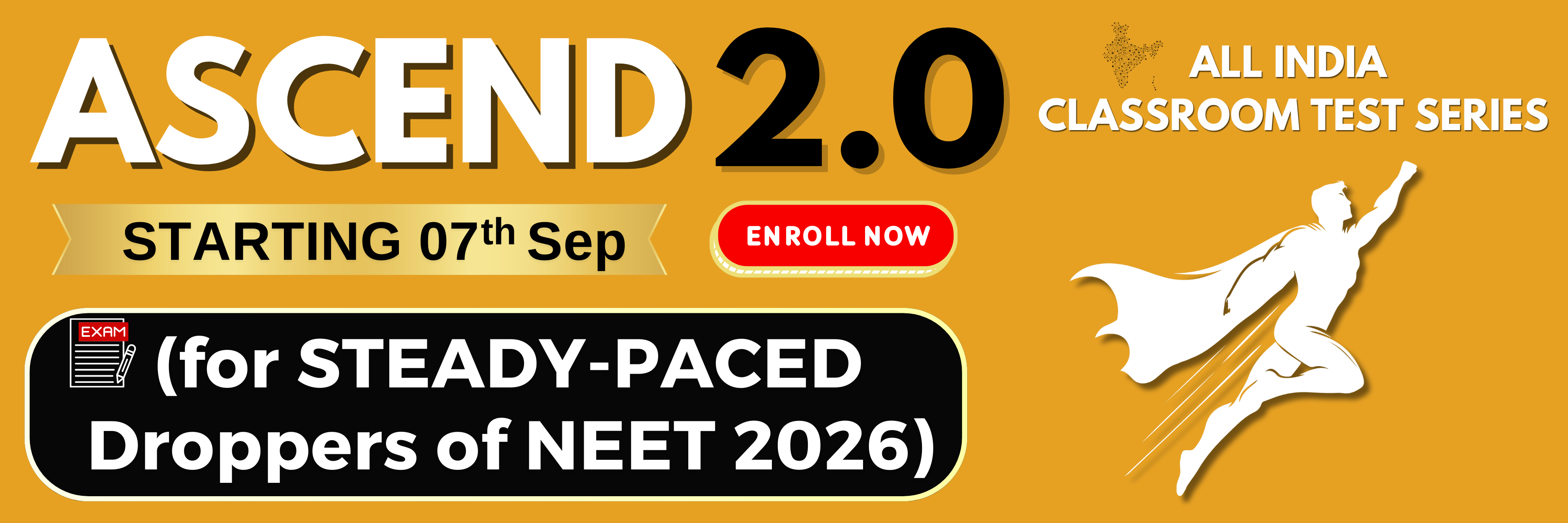Select Question Set:
Consider the given two statements:
Assertion(A):
Muscle tissue is not seen in diploblastic animals.
Reason (R):
An undifferentiated layer, mesoglea, is present in between the ectoderm and endoderm in diploblastic animals.
1.
Both (A) and (R) are True and (R) correctly explains (A).
2.
Both (A) and (R) are True but (R) does not correctly explain (A).
3.
(A) is True; (R) is False
4.
Both (A) and (R) are False
Subtopic: Phylum Coelenterata |
Level 3: 35%-60%
Please attempt this question first.
Hints
Please attempt this question first.
| Statement I: | In Cnidarians, polyp is a sessile and in cylindrical form and medusa is umbrella-shaped and free-swimming. |
| Statement II: | In Cnidarians, polyps produce medusae asexually and medusae form the polyps sexually. |
| 1. | Statement I is correct; Statement II is correct |
| 2. | Statement I is correct; Statement II is incorrect |
| 3. | Statement I is incorrect; Statement II is correct |
| 4. | Statement I is incorrect; Statement II is incorrect |
Subtopic: Phylum Coelenterata |
89%
Level 1: 80%+
Please attempt this question first.
Hints
Please attempt this question first.
Which of the following is not a Cnidarian?
| 1. | Sea anemone | 2. | Sea-pen |
| 3. | Sea-fan | 4. | Sea-hare |
Subtopic: Phylum Coelenterata | Phylum Mollusca |
80%
Level 1: 80%+
Please attempt this question first.
Hints
Please attempt this question first.
Amphibians are not characterised by the presence of:
1. Dry skin, with placoid scales
2. Eyelids
3. A tympanum
4. Three-chambered heart
1. Dry skin, with placoid scales
2. Eyelids
3. A tympanum
4. Three-chambered heart
Subtopic: Study of Amphibians |
77%
Level 2: 60%+
Please attempt this question first.
Hints
Please attempt this question first.
Crocodiles:
| I: | have a four chambered heart. |
| II: | are endotherms. |
| 1. | Only I is correct |
| 2. | Only II is correct |
| 3. | Both I and II are correct |
| 4. | Both I and II are incorrect |
Subtopic: Study of Reptilia |
69%
Level 2: 60%+
Please attempt this question first.
Hints
Please attempt this question first.
Ornithorhynchus is:
1. a flightless bird
2. a limbless amphibian
3. an egg laying mammal
4. an extinct reptile that was direct ancestor of mammals
1. a flightless bird
2. a limbless amphibian
3. an egg laying mammal
4. an extinct reptile that was direct ancestor of mammals
Subtopic: Study of Aves & Mammals |
77%
Level 2: 60%+
Please attempt this question first.
Hints
Please attempt this question first.
What structure in molluscs forms the shell and houses the gills?
1. mantle
2. epidermis
3. gastrovascular cavity
4. odontophore
1. mantle
2. epidermis
3. gastrovascular cavity
4. odontophore
Subtopic: Phylum Mollusca |
94%
Level 1: 80%+
Please attempt this question first.
Hints
Please attempt this question first.
| Assertion(A): | Cnidarians and Echinoderms are diploblastic animals. |
| Reason(R): | Cnidarians and Echinoderms lack mesoderm. |
| 1. | Both (A) and (R) are True and (R) is the correct explanation of (A). |
| 2. | Both (A) and (R) are True but (R) is not the correct explanation of (A). |
| 3. | (A) is True but (R) is False. |
| 4. | (A) is False and (R) is False. |
Subtopic: Phylum Coelenterata | Phylum Echinodermata |
76%
Level 2: 60%+
Please attempt this question first.
Hints
Please attempt this question first.
| Assertion(A): | The physiology of tapeworms is highly simplified. |
| Reason(R): | The reproductive potential of tapeworms is very high. |
| 1. | Both (A) and (R) are True and (R) is the correct explanation of (A). |
| 2. | Both (A) and (R) are True but (R) is not the correct explanation of (A). |
| 3. | (A) is True but (R) is False. |
| 4. | (A) is False and (R) is True. |
Subtopic: Phylum Platyhelminthes |
62%
Level 2: 60%+
Please attempt this question first.
Hints
In Echinoderms:
| Statement I: | Digestive system is complete with mouth on the lower (ventral) side and anus on the upper (dorsal) side. |
| Statement II: | An excretory system is absent. |
| 1. | Statement I is correct; Statement II is incorrect |
| 2. | Statement I is correct; Statement II is correct |
| 3. | Statement I is incorrect; Statement II is incorrect |
| 4. | Statement I is incorrect; Statement II is correct |
Subtopic: Phylum Echinodermata |
82%
Level 1: 80%+
Please attempt this question first.
Hints
Please attempt this question first.
Select Question Set:






